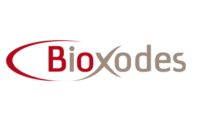PR News WireThis post was originally published on this site
- Results presented at the 17th World Stroke Congress (WSC 2025)
- LT3001(Odatroltide)-202 phase 2b study met primary endpoint. No symptomatic intracranial hemorrhage occurred.
- Data suggest that LT3001 has the potential to provide significant clinical benefit to patients in a longer treatment window (up to 24 hours after the onset of stroke symptoms) compared to current standard of care (4.5 hours).
TAIPEI, Oct. 28, 2025 /PRNewswire/ — Lumosa Therapeutics (Lumosa; 6535.TWO) today announced positive results from its Phase 2b clinical trial (LT3001-202) evaluating LT3001 (intravenous Odatroltide) in patients with acute ischemic stroke. Results from this China-based study were presented by Dr. Shuya Li, Chief Neurologist at Beijing Tiantan Hospital, during an oral presentation at the 17th World Stroke Congress (WSC 2025) held in Barcelona, Spain.
The study, led by Professor Yongjun Wang of Beijing Tiantan Hospital, was conducted across 34 medical centers in China. The results showed that LT3001 maintained a favorable safety profile under an extended 24-hour treatment window and demonstrated clear functional improvement signals in large artery atherosclerosis and disabling stroke patients, supporting advancement into global Phase 3 development.
Phase 2b (LT3001-202, China): Efficacy and Safety Overview
The China Phase 2b study met its primary endpoint of safety. No treatment-related symptomatic intracranial hemorrhage (sICH) was observed. Across all treatment groups, LT3001 demonstrated a consistent trend of functional improvement compared with placebo. At day 90, patients receiving LT3001 achieved a 7.3% higher rate of functional independence (mRS 0–2).
Key efficacy results:
- Moderate strokes (166 patients): +9% improvement in both mRS 0–1 and mRS 0–2
- Severe strokes (59 patients): positive trends observed; high-dose group achieved +4% (mRS 0–1) and +12% (mRS 0–2), indicating potential benefit even in more advanced cases
- Large artery atherosclerosis (LAA; 169 patients): +9% (mRS 0–1) and +11% (mRS 0–2) improvement
- Disabling strokes with arm motor drift (91 patients): +24% (mRS 0–1) and +21% (mRS 0–2) improvement
- Disabling strokes with leg motor drift (110 patients): +14% (mRS 0–1) and +12% (mRS 0–2) improvement
These data demonstrate consistent efficacy trends across multiple clinically meaningful subgroups, supporting LT3001’s potential to improve outcomes for stroke patients who are ineligible for current reperfusion therapies.
“LT3001 combines both thrombolytic and neuroprotective mechanisms,” said Dr. Shuya Li, Chief Neurologist at Beijing Tiantan Hospital. “The Phase 2 results demonstrate strong potential, and we look forward to the Phase 3 trial further confirming its clinical benefits.”
Global Phase 2 Study (LT3001-205; US/EU/Taiwan): Reinforcing Efficacy Trends
The global Phase 2 study (LT3001-205; n=88), conducted in the United States, Europe, and Taiwan, also met its primary safety endpoint. No treatment-related sICH was observed.
The study demonstrated efficacy trends consistent with the China trial:
- Disabling strokes with arm motor drift (22 patients, high dose): +13% (mRS 0–1) at day 90
- Disabling strokes with leg motor drift (17 patients, high dose): +14% (mRS 0–1) at day 90
Unlike the 202 study, the 205 trial included mismatch imaging analysis, further validating LT3001’s therapeutic effect in ischemic regions with salvageable tissue, with +7% (mRS 0–1) and +10% (mRS 0–2) improvements.
“LT3001 represents a completely novel drug design in stroke treatment—combining thrombolytic and neuroprotective properties into a single agent,” said Thomas Devlin, MD, PhD, Professor of Neurology at the University of Tennessee Health Science Center and Principal Investigator of the study. “The positive results of this trial across numerous endpoints are particularly exciting given the unique efficacy and safety advantages of this compound within an extended treatment window.”
Next Steps and Global Development Plans
These combined Phase 2 results provide critical clinical evidence supporting the continued development of LT3001 for acute ischemic stroke. Lumosa will continue its strategic collaboration with Shanghai Pharma (https://www.sphchina.com) and is actively engaging in global licensing discussions with international pharmaceutical partners.
Lumosa aims to accelerate global Phase 3 development of LT3001 and deliver innovative and effective treatment options for stroke patients worldwide.
About Acute Ischemic Stroke
According to the World Health Organization (WHO), stroke is the second leading cause of death for people over the age of 60 with approximately 6 million deaths in the world per year. Stroke can be categorized as hemorrhagic (bleeding) or ischemic (lack of blood flow to critical areas of the brain). Studies show ischemic stroke is most common, occurring in about 85% of all stroke cases. Stroke is notably a disease with significant global unmet medical need. There are 15 million people worldwide who suffer a stroke each year. Because only surgery and limited therapeutic options are currently available, 80% of stroke patients are left with no other treatment options or without desired outcomes.
About LT3001
LT3001(intravenous odatroltide) is a first-in-class, new chemical entity (NCE) being developed by Lumosa Therapeutics, Inc. (https://www.lumosa.com.tw). LT3001 is an antioxidant small molecule conjugated to a short peptide. The peptide induces reperfusion, restoring occluded blood flow, while the small molecule plays an important role in reducing reperfusion injury, such as caused by inflammation and free radicals. This dual-function molecule is thought to uniquely contribute to clot dissolving, anti-thrombosis, anti-inflammation, and anti-oxidation, and designed to increase the treatable AIS population by safely restoring blood flow with an extended treatment window.
About Lumosa
Lumosa Therapeutics, Inc. (https://www.lumosa.com.tw/) is a clinical-stage pharmaceutical company dedicated to the development of novel therapies and solutions for neurologic diseases with urgent unmet medical need. In addition to utilizing its own technology platform, the Company is also actively engaged in scientific licensing and co-development collaboration — building a pipeline from early to late-stage assets consisting of first-in-class and best-in-class drugs. Lumosa’s mission is to enrich patients’ quality of life through pioneering medical science, diverse collaborations, and a commitment to remain genuine and ever-evolving. Central to this mission is the company’s objective to develop its novel small molecule, LT3001, for the treatment of acute ischemic stroke, a medical disease for which more effective therapies are greatly needed.
SOURCE Lumosa Therapeutics Co., Ltd.







